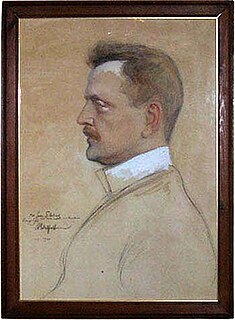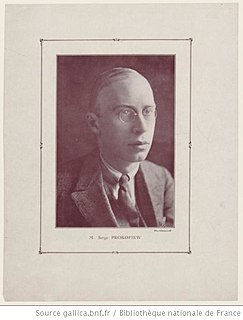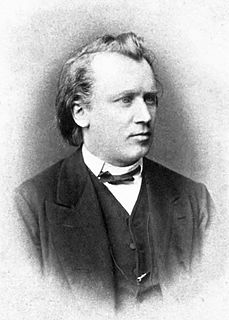Related Research Articles

Orchestration is the study or practice of writing music for an orchestra or of adapting music composed for another medium for an orchestra. Also called "instrumentation", orchestration is the assignment of different instruments to play the different parts of a musical work. For example, a work for solo piano could be adapted and orchestrated so that an orchestra could perform the piece, or a concert band piece could be orchestrated for a symphony orchestra.

Joseph Haydn's Symphony No. 13 in D major was written in 1763 for the orchestra of Haydn's patron, Prince Nikolaus Esterházy, in Eisenstadt.

The Symphony No. 94 in G major is the second of the twelve London symphonies written by Joseph Haydn. It is popularly known as the Surprise Symphony.
The Symphony No. 8 in C minor, Op. 65, by Dmitri Shostakovich was written in the summer of 1943, and first performed on November 4 of that year by the USSR Symphony Orchestra under Yevgeny Mravinsky, to whom the work is dedicated. It was named the 'Stalingrad Symphony' by the USSR.

The Violin Concerto in D minor, Op. 47, was written by Jean Sibelius in 1904, revised in 1905. It is his only concerto. It is symphonic in scope, with the solo violin and all sections of the orchestra being equal voices. An extended cadenza for the soloist takes on the role of the development section in the first movement.

Sergei Prokofiev wrote his Symphony No. 3 in C minor, Op. 44, in 1928.

Sergei Prokofiev wrote his Symphony No. 5 in B-flat major, Op. 100, in Soviet Russia in one month in the summer of 1944.

The Symphony No. 8 in G major, Op. 88, B. 163, is a symphony by Antonín Dvořák, composed in 1889 at Vysoká u Příbramě, Bohemia, on the occasion of his election to the Bohemian Academy of Science, Literature and Arts. Dvořák conducted the premiere in Prague on 2 February 1890. In contrast to other symphonies of both the composer and the period, the music is cheerful and optimistic. It was originally published as Symphony No. 4.
The Cello Concerto in B minor, Op. 104, B. 191, is the last solo concerto by Antonín Dvořák. It was written in 1894 for his friend, the cellist Hanuš Wihan, but was premiered in London on March 19, 1896, by the English cellist Leo Stern.

The Symphony No. 1 in C minor, Op. 68, is a symphony written by Johannes Brahms. Brahms spent at least fourteen years completing this work, whose sketches date from 1854. Brahms himself declared that the symphony, from sketches to finishing touches, took 21 years, from 1855 to 1876. The premiere of this symphony, conducted by the composer's friend Felix Otto Dessoff, occurred on 4 November 1876, in Karlsruhe, then in the Grand Duchy of Baden. A typical performance lasts between 45 and 50 minutes.
The Young Person's Guide to the Orchestra is a 1945 musical composition by Benjamin Britten with a subtitle Variations and Fugue on a Theme of Purcell. It was based on the second movement, "Rondeau", of the Abdelazer suite. It was originally commissioned for the British educational documentary film called Instruments of the Orchestra released on 29 November 1946, directed by Muir Mathieson and featuring the London Symphony Orchestra conducted by Malcolm Sargent; Sargent also conducted the concert première on 15 October 1946 with the Pool Philharmonic in the Philharmonic Hall, Liverpool, England.
The Unanswered Question is a musical work by American composer Charles Ives. Originally paired with Central Park in the Dark as Two Contemplations in 1908, The Unanswered Question was revised by Ives in 1930–1935. As with many of Ives' works, it was largely unknown until much later in his life, and was not performed until 1946.
Island Prelude is a chamber work composed by Joan Tower in 1988. Intended for oboist Peter Bowman of the Saint Louis Symphony Orchestra, it is originally scored for solo oboe and string orchestra.
An organ concerto is a piece of music, an instrumental concerto for a pipe organ soloist with an orchestra. The form first evolved in the 18th century, when composers including Antonio Vivaldi, George Frideric Handel and Johann Sebastian Bach wrote organ concertos with small orchestras, and with solo parts which rarely call for the organ pedal board. During the Classical period the organ concerto became popular in many places, especially in Bavaria, Austria and Bohemia, reaching a position of being almost an integral part of the church music tradition of jubilus character. From the Romantic era fewer works are known. Finally, there are some 20th- and 21st-century examples, of which the concerto by Francis Poulenc has entered the basic repertoire, and is quite frequently played.
The Symphony No. 5 by Robert Simpson was written in 1972 and "dedicated in admiration" to the London Symphony Orchestra, who gave the premiere on May 3, 1973, conducted by Andrew Davis. The second performance in England didn't take place until 1984.
Robert Simpson composed his Symphony No. 11 in 1990, dedicating the work to the conductor and composer Matthew Taylor, who was scheduled to give the premiere at Cheltenham Town Hall with the City of London Sinfonia on 15 July 1991. However, this event never took place, and the actual premiere was given at the Malvern Festival in 1992, by the same performers.
The Flute Concerto by Robert Simpson was composed in 1989 and dedicated to Susan Milan, the flautist who commissioned the work and gave its premiere in May 1992 at the Malvern Festival with the City of London Sinfonia conducted by Richard Hickox.

The Symphony No. 3 is a symphony in five movements composed between 1988 and 1995 by Krzysztof Penderecki. It was commissioned and completed for the centenary of the Munich Philharmonic. Its earliest version, Passacaglia and Rondo, premiered at the International Music Festival Week in Lucerne, Switzerland, on August 20, 1988. It was performed by the Lucerne Festival Orchestra and conducted by Penderecki. The full symphony premiered in Munich on 8 December 1995, performed by the Munich Philharmonic, again conducted by the composer.
Russian composer Alfred Schnittke's Symphony No. 7 was composed in 1993. It is dedicated to conductor Kurt Masur who gave its world premiere performance in New York with the New York Philharmonic Orchestra on 10 February 1994.

The Symphony No. 2, Op. 14, is a three-movement orchestral composition by the Swedish composer Dag Wirén, who wrote the piece from 1938–39. Despite its numbering, the Second Symphony represents Wirén's first contribution to the form as a professional. Swedish conductor Sixten Eckerberg premiered the new symphony with the Gothenburg Symphony Orchestra in Gothenburg on 13 October 1940. Although the public received the premiere positively, the critics cautioned that the new work was mildly derivative of Carl Nielsen. At 30 minutes, the Second is the longest of Wirén's four essays in the genre, as well as, stylistically, the most late-Romantic and pastoral of the set.
References
- ↑ "Description of Manuscript Ms.Mus.1738/1/7" (PDF). Retrieved 11 May 2021.
- ↑ Andrew Jackson, "Recordings and Reviews of Simpson's Works Archived 2008-10-11 at the Wayback Machine . Accessed 4 March 2008